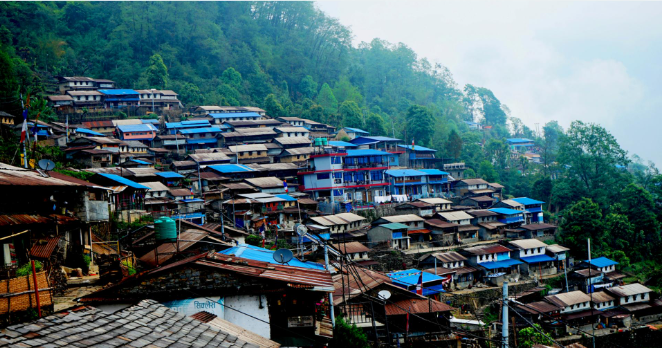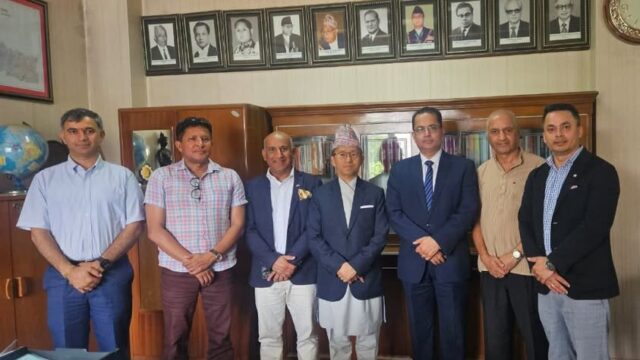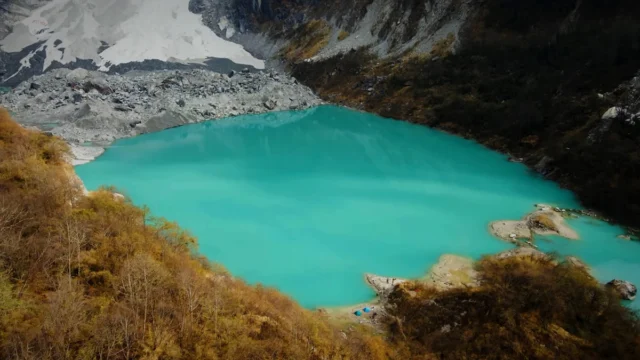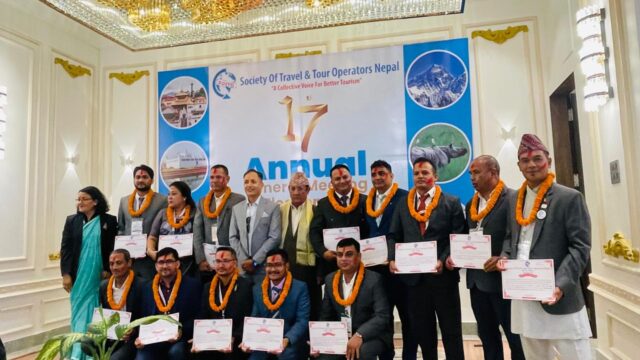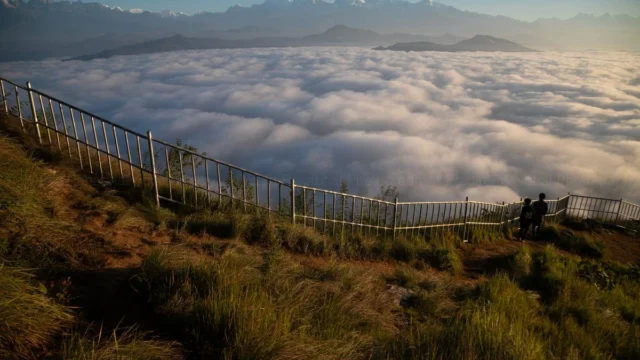As the autumn sun brightens the skies, the festive season in Nepal brings an added sense of joy and excitement to cities and villages alike. With major festivals like Dashain, Tihar, and Chhath approaching, people are preparing for family gatherings and celebrations. For many, this time of long holidays also means planning trips to explore the country’s natural beauty. Trekking, especially from October to December, is considered an ideal outdoor activity in Nepal.
Famous trekking routes, including the Annapurna and Manaslu circuits, are now bustling with both domestic and international tourists. Traditionally, trekking in Nepal was primarily popular among foreign visitors, but it has become increasingly beloved by Nepali travelers as well, particularly after Dashain. People either trek with their families or enjoy the adventure with friends.
In addition to trekking, tourists are traveling by road and air to various destinations across the country. These trips offer an immersive experience of Nepal’s stunning landscapes, unique geography, climate, biodiversity, and Himalayan lifestyle. Trekking is not only a way to appreciate the country’s beauty but is also known for its physical and mental health benefits.
Nepal is home to some of the world’s most famous trekking destinations, attracting millions of visitors annually. If you’re planning a trip this Dashain, the popular villages around Pokhara might be on your list. These locations offer charming rural experiences, traditional hospitality, and breathtaking natural scenery that captivate tourists.
Located 41 km from Pokhara in Kaski’s Madi Rural Municipality-1, Sikles is a well-known destination for nature lovers. Nestled at the base of the Hiunchuli Mountain, the village is surrounded by lush forests and green pastures, with the Madi River flowing below. Its picturesque setting and the cool mountain breeze make Sikles an ideal spot for relaxation and exploration. The village, predominantly inhabited by the Gurung community, offers a perfect blend of nature and culture.
The village stands out with its neat stone houses, stone-paved streets, and traditional architecture, providing a peaceful escape from city life. The Annapurna Conservation Area Project (ACAP) includes Sikles in its popular trekking routes, particularly the Sikles-Kapuche-Kori trail. From Sikles, trekkers can reach the Kapuche Glacier Lake and Kori Peak, 3,800 meters above sea level, in about three days. Due to the growing interest in tourism, the village now has several hotels, and the region has been further promoted through media outlets, including YouTube.
Tourism in Sikles began two decades ago with the introduction of community homestays, and the industry has since seen significant growth. There are now dozens of homestays and hotels, and investments in tourism infrastructure continue to increase. Besides trekking, visitors can enjoy the local Gurung Museum, the Peace Memorial, Sikles Park, and the stunning views of Annapurna and Lamjung Himal. For a rich cultural experience, tourists can also participate in traditional Gurung rituals, dances, and songs. A trip to Sikles offers not just scenic beauty but also a connection to Nepal’s rich history, as the village is considered a starting point for the country’s peace process.
Situated in Machhapuchhre Rural Municipality-8, Kaski, Lwang is another popular destination near Pokhara. The village, known for its cluster of Gurung homes, is easily accessible by a two-hour drive. Lwang’s distinctive stone houses, paved courtyards, and winding alleys offer a glimpse into traditional Gurung life. Surrounded by natural beauty, Lwang provides a tranquil escape from the hustle and bustle of city life.
Tourism in Lwang began in 2010 when a group of local women started a homestay program with just seven houses. The program has since expanded to 26 houses, with the capacity to host up to 400 guests at a time. Lwang’s homestays have become a popular choice for domestic tourists, who come to enjoy the village’s peaceful ambiance, local cuisine, and cultural hospitality. Visitors can also explore the nearby tea garden, spread across 1,200 ropanis, which adds to the village’s charm. Lwang’s tea has even found its way to European markets.
The village, located 1,400 meters above sea level, offers stunning views of Machhapuchhre and Annapurna peaks, especially at sunrise. Lwang is also a popular stop for trekkers heading to Annapurna Base Camp or Mardi Himal. The growing interest in Lwang has led to increased tourism activities, and several Nepali films, including “Prasad-2” and “Dui Nambari,” have been shot in the village.
Both Sikles and Lwang showcase Nepal’s extraordinary natural and cultural heritage, making them ideal destinations for this festive season. Whether it’s trekking through the Himalayan foothills or experiencing traditional Gurung life, these villages promise an unforgettable adventure for tourists.
Source: RSS
